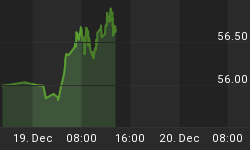In the first quarter of 2011 (Q111), net gold hedging was reported by GFMS and Société Générale. A gold mining company may hedge its production on expectations of falling gold prices in order to lock in high prices and possibly avoid losses. As gold hits one nominal high after another, is such behavior a sign that the bull market in gold is over?
To answer that question, we had a look into Boliden's (T.BLS) latest interim report. The GFMS study mentions that in Q111, Boliden was one of the most active hedgers; it was accountable for 58% of gross hedging activity during that period. Let's have a closer look at the company.
Boliden is not a pure gold mining company. Gold is metal number three in Boliden's portfolio, after copper and zinc. In the second quarter of 2011, Boliden produced 158.5 million pounds of zinc and 45.2 million pounds of copper in concentrates. Gold production in Q211 amounted only to 35,062 ounces; silver, 1.9 million ounces. Boliden is a regular hedger.
Under the current gold price environment, in the beginning of 2011 Boliden decided to increase its gold production. It plans to accomplish this by expanding operations at its Garpenberg zinc-copper-lead-gold-silver mine and by starting up a new mine, Kankberg, which would produce tellurium and gold. Both are located in Sweden.
Boliden used hedging to insure its planned US$614 million (SEK3.9-billion) investment into Garpenberg and US$75 million (SEK475 million) investment into Kankberg. At Kankberg, it hedged all future tellurium production and 80 percent of the gold output. The company wants to leverage on the current high gold and tellurium prices to make sure Kankberg operations remain profitable.
Boliden's case is quite understandable. Hedging has been the company's policy for quite a long time, and the need to insure two large new production initiatives resulted in an unusual amount of new contracts.
While Boliden seems to continue committing a significant portion of its future sales in the form of forward contracts, about 60% of all deals at the end of the first quarter make use of a different vehicle: collar options.
The collar-option strategy provides the seller with a balance of limited downside and more flexibility on the upside. The strategy in essence provides a trader (a mining company, in our case) with a price corridor for the contracts to fluctuate within. This is more flexible than setting up a fixed forward price.
It is quite interesting to see what the current price corridor for future gold sales looks like, judging by the option positions held by gold hedgers. Have a look at the following table:
| Company | Downside Cap | Upside Cap |
| Minera Frisco, S.A.B. de C.V. | 1,229.52 | 1,799.45 |
| Industrias Peñoles, S.A.B. de C.V. | 1,100 | 2,140-2,622 |
| Golden Star Resources | 1,050-1,200 | 1,457-1,930 |
| Coeur d'Alene Mines | 940.35 | 1,852.62 |
The numbers seem quite familiar. The "floors" remind one of some of the more conservative gold prices used in the current economic assessments of gold projects: US$940.35 is close to what Exeter Mines (T.XRC) used as the lowest gold price in its prefeasibility study on the company's monster Caspiche deposit (US$1,000). The highest "ceiling," US$2,622, is higher than most of the "best-case" mine scenarios, but is understandable as a gold price projection based on how the metal has been performing so far in 2011. In short, these numbers do not seem to reveal anything that we don't already know... the timing, however, is quite interesting.
Timing is an important parameter in option pricing. As it turns out, on average the hedgers' contracts span over quite a short-term period. Quoting the GFMS report:
While the industry as a whole appears to be less vehemently opposed to hedging than was the case a couple of years ago, we note that most hedging is still being undertaken over a short to medium time frame: little hedge cover extends beyond 2013.
There are outliers, however; and Boliden is one of them.
It is interesting to note that around half of [Boliden's] contracts are scheduled for delivery between 2014-2017; the longest dated contracts seen for quite some time, put in place to secure the long term viability of the Garpenberg expansion.
As we see, the reasons behind the increase in hedging are understandable. There are no signs of a tectonic shift in producer attitudes towards gold. The most cautious ones take advantage of the metal's price increase, but their actions are largely company- and even project-specific. Hedging can be a good way to increase investor confidence in a mining project, to insure their investments, or to secure a bank loan. We do not see that positive net hedging in the first quarter is alarming - the economic problems bubbling to the surface now should provide a lot of reasons for the gold price to continue rising for quite some time.
Finally, most of the global hedge book is comprised of recent contracts, the report says. They were entered into when gold hit nominal highs and some of the mining companies started acting protective of their future revenues.
As company managers seek ways to guard their profits, Casey International Speculator seeks opportunities to profit from the best junior mining companies and brings you in-depth analysis of the small-cap precious metals markets, as well as the best exploration stocks poised for market-beating gains. Try it risk-free today, with 3-month money-back guarantee.















